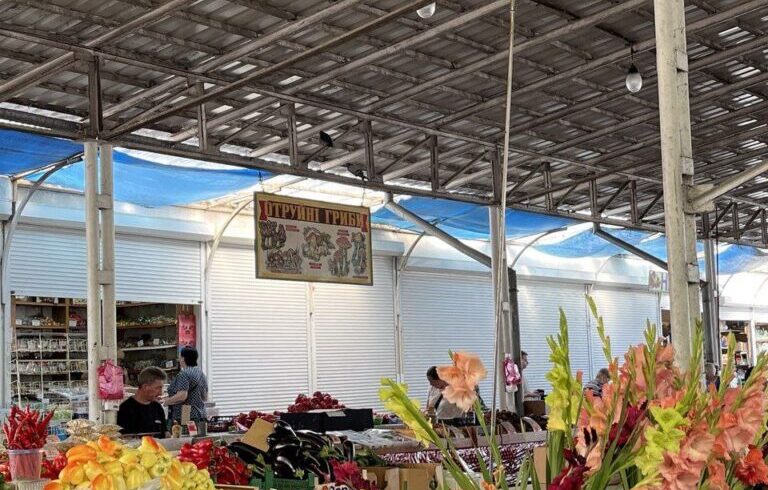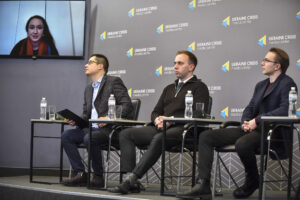
Ukraine’s central bank reported on 31 July that inflation will moderate to 9.7% by December 2025, down from its May peak of 15.9%. This signaled monetary stability that exceeded many international expectations for a wartime economy.
The encouraging headline masks a troubling contradiction: Ukrainian families now pay more for basic groceries than their counterparts in EU countries, with butter costing 25% more than in Poland, according to Focus.ua analysis. This paradox — macro success alongside micro hardship — tests whether Ukraine can sustain the economic discipline that international lenders and reconstruction investors demand.
Central bank maintains credibility with a tight monetary stance
The National Bank of Ukraine kept its key policy rate at 15.5%, which would be considered restrictive in peacetime economies but demonstrates institutional strength that Western financial markets monitor closely.
“The NBU will stick to a rather tight monetary stance for as long as it is needed in order to ensure that inflation is steadily declining toward its 5% target over the policy horizon,” NBU Governor Andriy Pyshnyy said on 24 July during the monetary policy briefing.
The central bank revised its inflation trajectory, now projecting 9.7% in 2025, 6.6% in 2026, and a return to the 5% target only by 2027. This timeline that aligns with European Central Bank standards and signals Ukraine’s commitment to EU integration despite wartime pressures.
Real GDP growth projections remain modest at 2.1% for 2025, closely matching International Monetary Fund expectations of 2-3% growth and World Bank projections of 2% this year. This consensus among major multilateral institutions suggests Ukraine’s economic management has earned international credibility.
Foreign reserves cover more than five months of imports — exceeding the three-month standard that rating agencies use to assess emerging market stability — supported by continued international funding that maintains confidence among sovereign bond investors.
Household costs expose fragility behind stability
While macroeconomic indicators show stability, Ukrainian households face mounting cost pressures — a fact covered elliptically in the NBU report by the phrase “convergence of food prices.” The average Ukrainian food basket has become increasingly expensive, particularly affecting regions with damaged production capacity.
Weather-related harvest disruptions compound these pressures. The NBU expects agricultural improvements to help cool food inflation, but rising utility costs and excise tax increases offset these gains. Real wages are growing approximately 3-4% annually, providing some relief, but many households struggle with necessities despite overall economic resilience.
This contradiction between institutional success and widespread hardship raises questions about aid model sustainability and long-term economic transformation prospects.
International confidence hinges on continued discipline
Ukraine’s monetary achievement serves multiple strategic purposes that extend beyond domestic concerns. The country’s ability to maintain inflation targeting and currency stability while fighting an existential war demonstrates institutional resilience that reconstruction investors and EU accession evaluators closely monitor.
The contrast with Russia’s economic trajectory remains striking: while Ukraine maintains disciplined monetary policy at 15.5% rates, Russia’s central bank unexpectedly cut its rate by 200 basis points in late July — its biggest reduction since May 2022 — signaling growing economic pressures despite earlier rate hikes to combat inflation.
Yet the food price paradox illustrates Ukraine’s fundamental challenge: maintaining the macroeconomic frameworks needed for post-war integration while supporting a population under extreme stress. How Ukraine manages this balance will determine whether international support translates into genuine economic transformation or merely postpones deeper structural reckonings.
For foreign observers, Ukraine’s inflation report represents more than monetary policy — it’s a test case for whether a country can simultaneously fight for survival and build the institutional foundations for European integration.
Read also
Ukraine central bank predicts inflation to rise in first months of 2025
Reuters: Ukraine’s financing gap could widen due to delayed reforms
(function(w,q){w[q]=w[q]||[];w[q].push([“_mgc.load”])})(window,”_mgq”);
You could close this page. Or you could join our community and help us produce more materials like this.
We keep our reporting open and accessible to everyone because we believe in the power of free information. This is why our small, cost-effective team depends on the support of readers like you to bring deliver timely news, quality analysis, and on-the-ground reports about Russia’s war against Ukraine and Ukraine’s struggle to build a democratic society.
Become a patron or see other ways to support.





